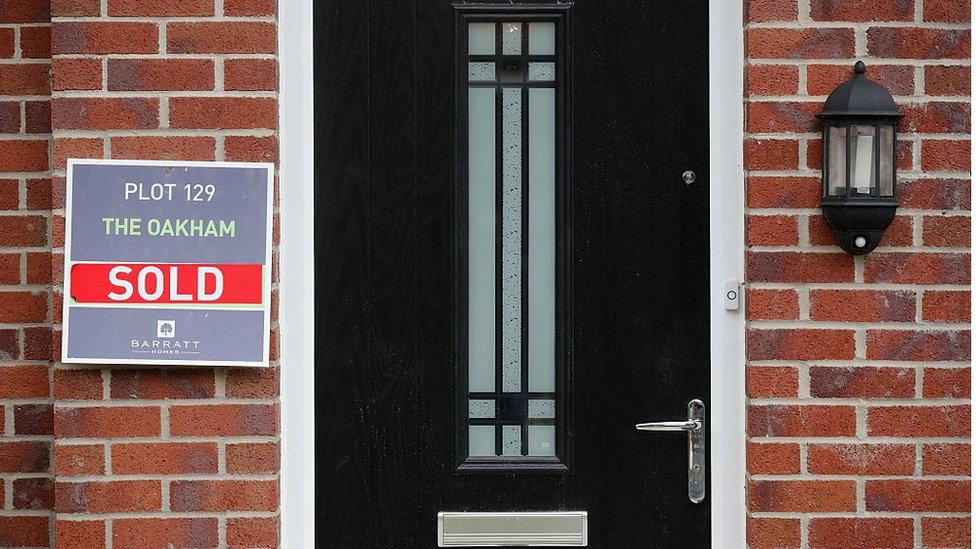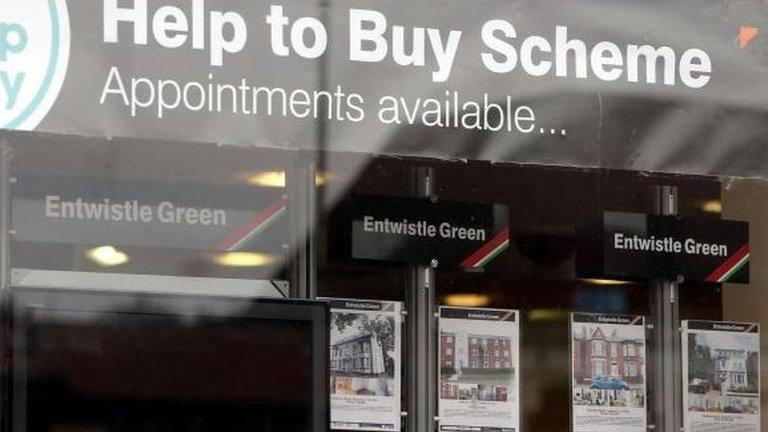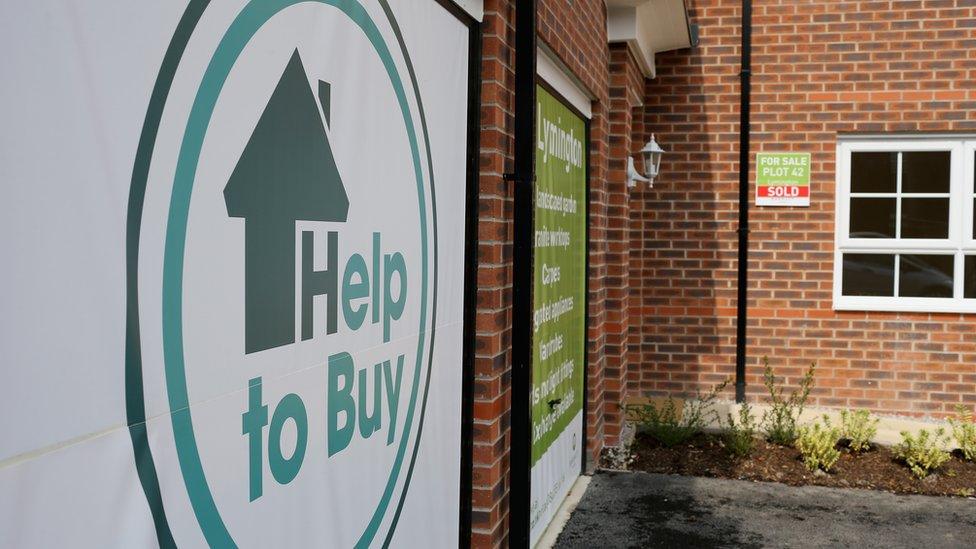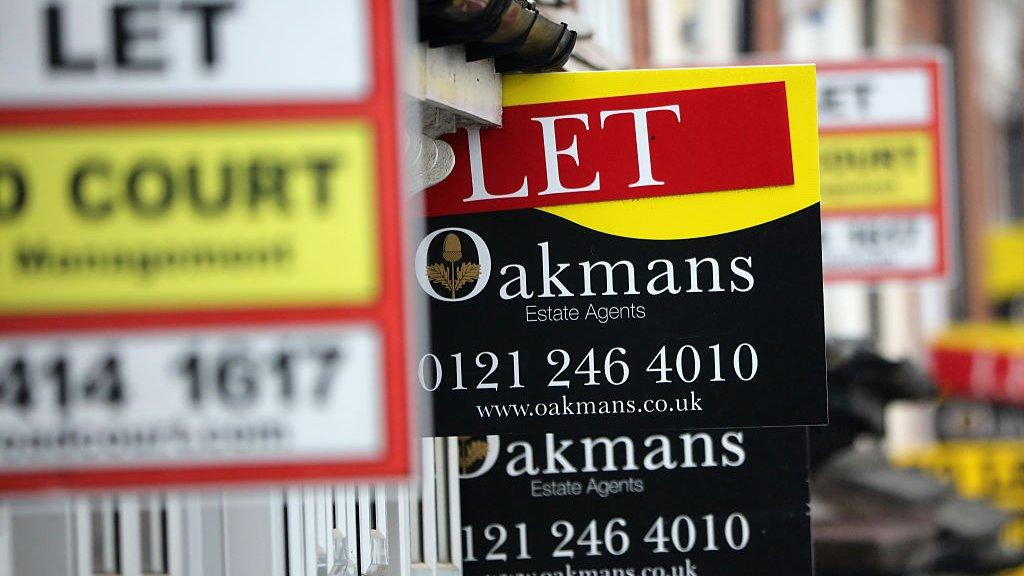Theresa May promises £10bn Help to Buy boost
- Published

The government will find an extra £10bn for the Help to Buy scheme to let another 135,000 people get on the property ladder, Theresa May has said.
The extra cash will help buyers get a mortgage with a deposit of as little as 5% to buy newly built homes.
Mrs May gave no detail about the source of the funding and said plans would be outlined in the Budget on 22 November.
But think tank the Adam Smith Institute criticised the revival of the scheme, saying it would push up house prices.
The prime minister confirmed the extra funding on BBC1's Andrew Marr Show as the Conservative party conference begins in Manchester.
Helping more people to buy their first home is part of a Conservative push to win back younger voters, many of whom have switched to Labour under Jeremy Corbyn.
Home ownership has fallen in recent years, with 62.9% of the estimated 22.8m households in England being owner-occupiers in 2015-16, the Department for Communities and Local Government found. That is down from 70.9% in 2003.
Just 20% of those aged 25 own a property, compared with 46% two decades ago, according to the Local Government Association. Almost half of those aged 24 to 34 in England pay rent to a private landlord.
Mrs May also promised more safeguards for tenants in the private rental sector and incentives for landlords to offer longer tenancies.
Polly Neate, chief executive of Shelter, the housing and homelessness charity, criticised the extension, saying Help to Buy had increased house prices and "propped up a speculative development model in need of reform".

The Adam Smith Institute, a right-wing think tank, likened the revival of Help to Buy to "throwing petrol on to a bonfire".
Sam Bowman, its executive director, said: "The property market is totally dysfunctional because supply is so tightly constrained by planning rules, and adding more demand without improving the supply of houses is just going to raise house prices and make homes more unaffordable for people who don't qualify for the Help to Buy subsidy.
"Reviving Help to Buy is an astonishingly ill-judged move that may prove economically and politically disastrous for the government."

What is Help to Buy?
The first phase started in April 2013 in England and offered a 20% equity loan from the government to buyers of newly built properties worth up to £600,000.
Buyers need a 5% deposit. When the property is sold, the government reclaims its loan and will make a profit if the property's value has risen.
The Help to Buy cash can only be used for the purchase of newly built homes.
In November 2015 George Osborne, then Chancellor, said the equity loan scheme in England would be extended to 2021 rather than end in December 2016.
Similar schemes in Wales in Scotland have now ended.

The Help to Buy scheme has helped more than 200,000 people buy a newly-built home in the past four years, according to the Home Builders Federation, external.
The Federation said the scheme now accounts for one in 12 of all first-time buyers and has helped the industry to keep investing in new sites "at a time when activity in the market generally remains stubbornly slow".
Demand for new homes under Help to Buy meant that permission for 321,982 new homes was granted in the 12 months to June in England - the highest figure since 2006, when the Federation started collating figures.
- Published30 December 2016

- Published15 February 2017

- Published18 August 2017
